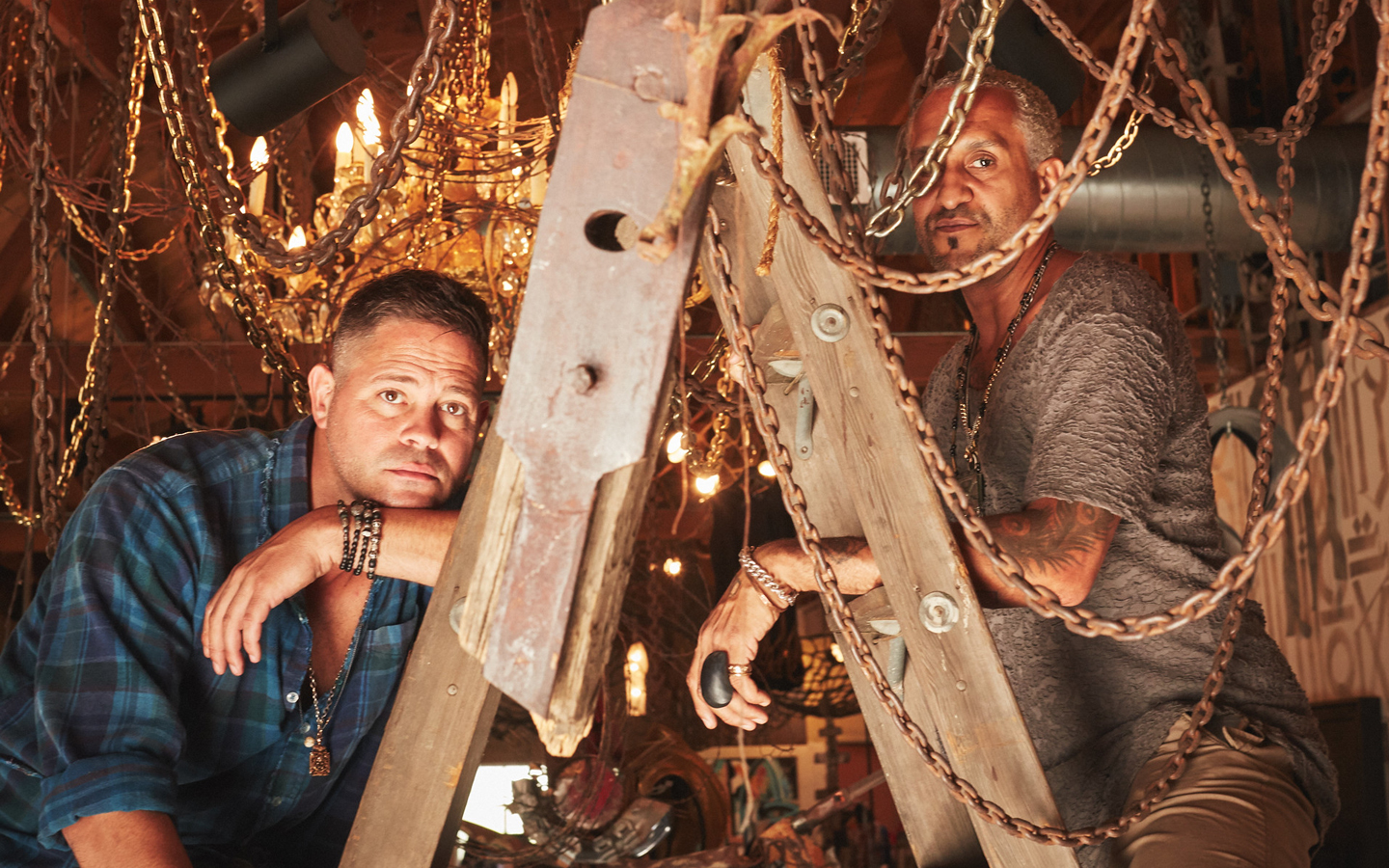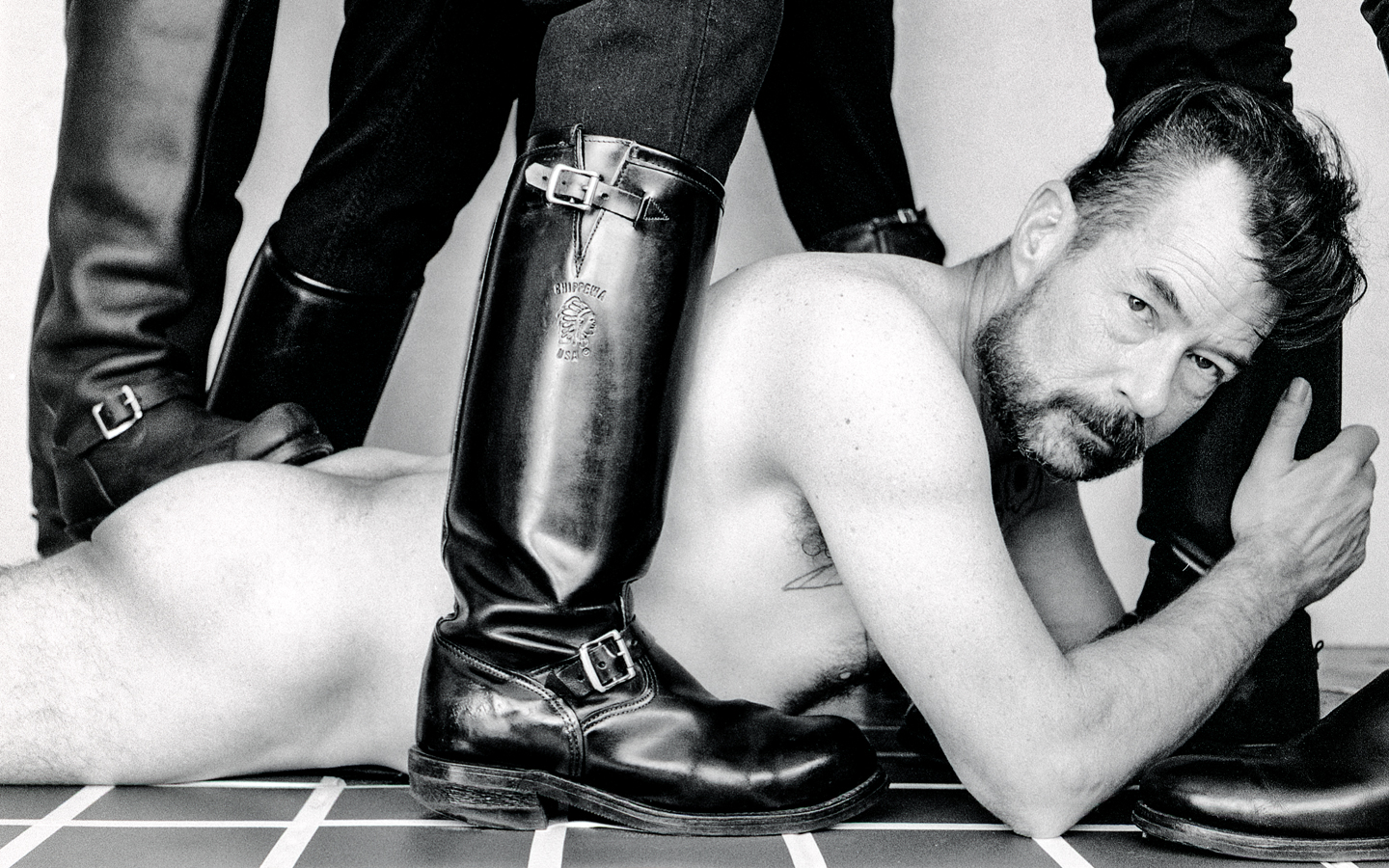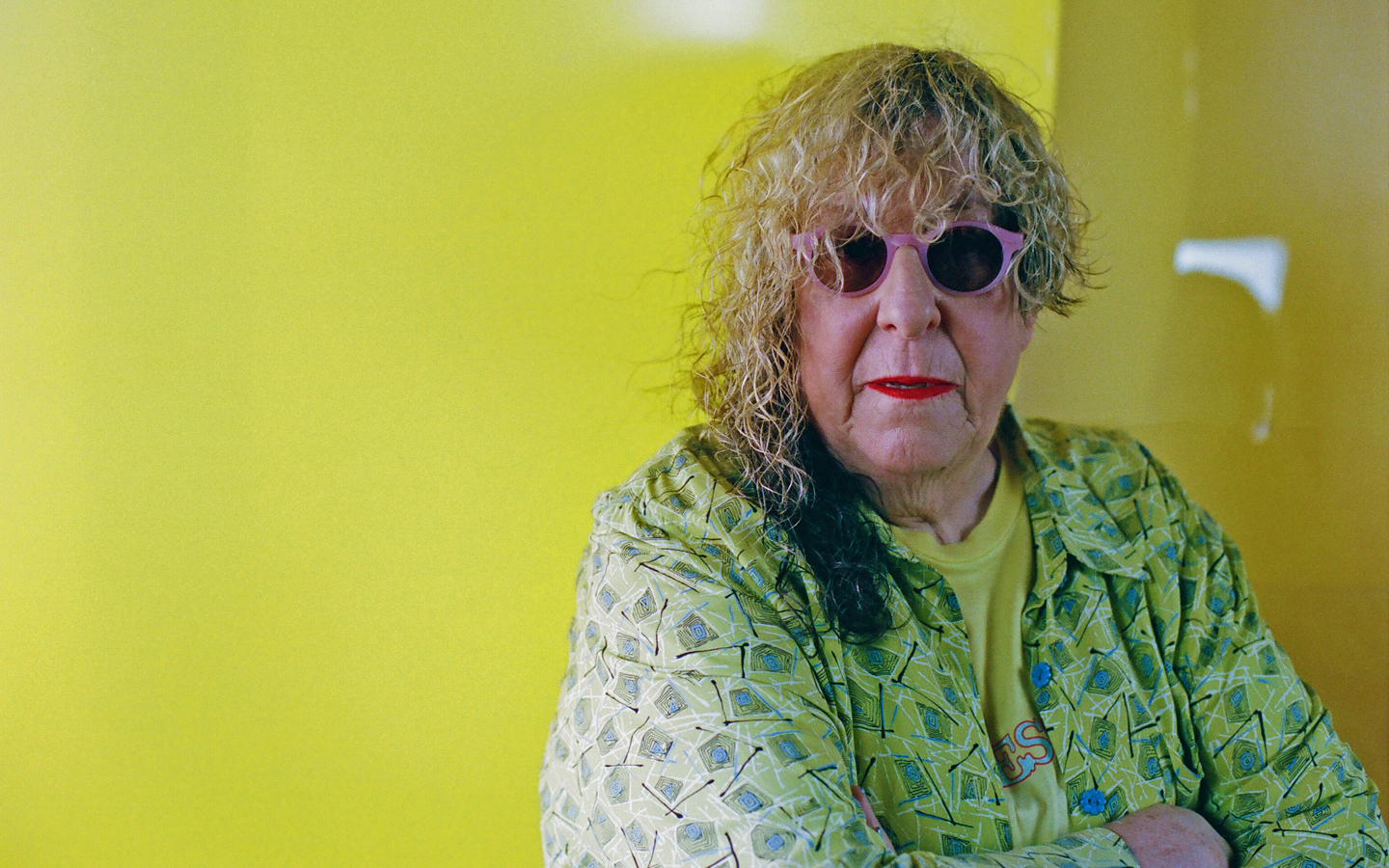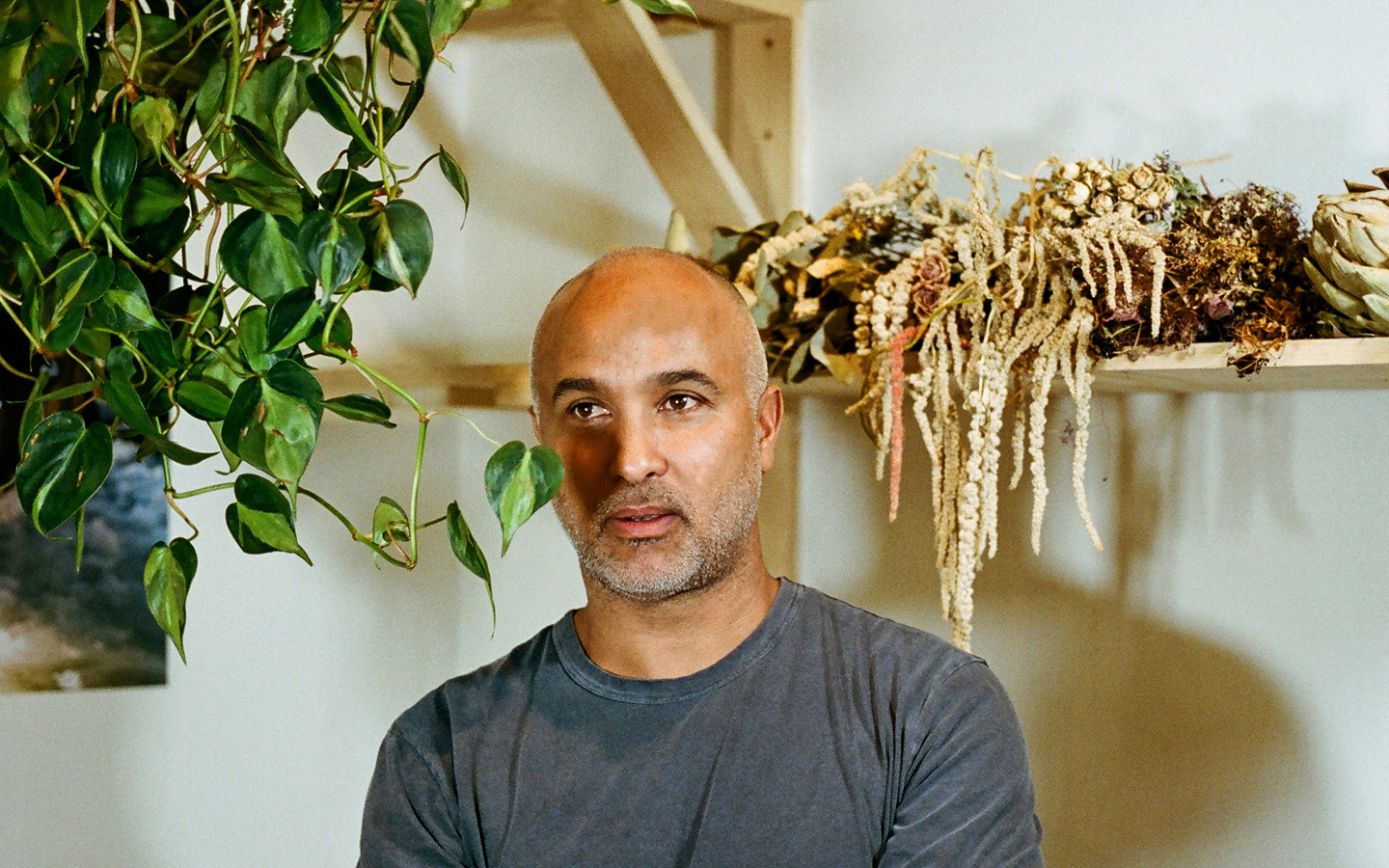
Church Boutique
RODNEY BURNS + DAVID MALVANEY
TEXT ALLEN SOVORY II
VISUAL MEENO PELUCE
Did you know there is a place (probably not far from you) that provides Rihanna, Lenny Kravitz, P!nk, Steven Tyler, Kylie and Kendall Jenner, Barbra Streisand, Anderson Paak, and the Saudi royal family with the clothes adorning their backs, the art enhancing their spaces, and the magical pieces of jewelry swinging from their wrists and necks? And . . . that you can go there, too?
That’s Church Boutique, a private, rarefied space in the heart of West Hollywood. The building, on a corner of Santa Monica Boulevard, is covered in ivy, with no sign or marquee inviting the public in. To enter, you must ring the doorbell on the corner, next to the wrought-iron gate.
Rodney Burns, co-owner of Church Boutique, is the perfect reflection of the world that he, with business partner David Malvaney, has created; a shop full of beautiful, magical things. Little black dresses cut to perfection, art everywhere, belts and hats so over the top that… well, you’d just have to see it for yourself. They understand that anyone can have a cool shop with wildly expensive clothes, jewelry and sculptures. But they take it to the level of a fully immersive experience. The fierce eyes of an ancient African statue stare me down, a floor-length gown looks like it would jump off any red carpet. An imposing glass chest displays diamond encrusted, tribal-styled bling… are those talons covered in black diamonds?
Up-and-coming artist Damian Gomes has several paintings up. There are a number of kilts, and hanging from the rafters is the best collection of ponchos I’ve ever seen. Each item is a piece of art, each holding its own, each framed by perfect lighting. It’s as reverential as the name of the shop itself, chosen, Burns says, because “I love community. A place for like-minded individuals. A house of worship.”
Burns was born in New Orleans to middle-class parents. They moved to Dallas, where he lived until he was 21. Despite a fondness for the “Big D,” when he took a trip to LA, he fell in love with the city. But nothing could have prepared him for the whirlwind force of life in the fast lane.
“Being exposed to so much of that at a young age, that amount of wealth and success, was a little bit overwhelming for me. So it took me a minute to grow up and develop a strong sense of self and to be able to be okay… to know that I was enough and that what I had was enough.” He worked as a wardrobe stylist, then booked jobs on his own, including a music video and a piece for Interview Magazine. He thought he’d arrived.
“I had no idea what a rat-race it was to be a wardrobe stylist. Especially because… this was pre-cell-phone, and to be up at the crack of dawn prepping, then running out to the Beverly Center, shops on Third Street, little independents, the fittings, the take-backs…”
He blew up, made lots of money, bought lots of stuff, and, unfortunately, drank a bit too much of his own Kool-Aid.
“I stayed dressed to kill. My personal wardrobe was so dope that I actually received fan mail!” But one day, he ran out of money. A dilemma that got him into retail.
“A friend of mine was working at a high end shop which will remain nameless, and had been there for a long time. I hit him up because the holidays were here and I needed a job. So I went to work there as an assistant and in a year and a half I was doing sales and I did really, really well. So I ended up staying there for seventeen years . . . in golden handcuffs.”
At last outgrowing the position, his first step was to partner with David, who also worked at the “shop that will not be named.” They began working and showing on David’s balcony in the Hollywood hills above Yamashiro in Hollywood.
“I did personal shopping for clients and organized closets. While looking for a space for the boutique, we were also working with a few dope designers, keeping current, to continue accommodating the clients I had grown accustomed to servicing for so many years.”
I ask him what that period of his life felt like.
“Scary as hell! Because I’d been so long associated with ‘that’ boutique and was pretty much only interacting with people that worked or shopped there. That place was my identity. I was introduced into Los Angeles society there. I learned very quickly after David and I opened this store who appreciated me for me and who appreciated me for my former affiliation.”
He describes diving headlong into the process of curating not only the shop itself, but the Church Boutique brand. It had to make a statement that hadn’t been made in LA at the time.
“You wouldn’t know it unless you work behind the scenes in high-end retail, but most of the shops support the same ten designers that every one of the other Beverly Hills shops support, and Neiman’s and Saks. They’ve all got the list. Once I left ‘that’ world, David and I opened our business, which primarily stocks independent designers and designers that don’t necessarily have a platform. Not to say that those shops are wrong or bad… They’re killin’ it over there, and I’m killin’ it over here. Different worlds.”
When Church opened its doors in early 2009, the United States was in a full-on financial tailspin. Sales dropped with the stock market crash.
“I had clients moving to one and two bedroom apartments on the Wilshire corridor, out of multi-bedroom homes in Beverly Hills 90210 proper!” he relates, adding “But in the same breath, some of the first clients that we had in the shop, before we had an air-conditioning system, were members of the Saudi royal family, so that’s what it has always been. Highs and lows.”
Today, Church’s primary clientele come from “everywhere.” Word of mouth helps promo the shop, so clients already perceive what they’ll experience before they enter his domain. And what they’ll experience of course, are in part, his designers. While he started with LA-based creators, now they come from everywhere: New York, Bali, Israel, Japan, and Columbia to name a few locales.
“It’s a family of designers that we work with that we love… it’s part of what makes us relevant, especially to our music biz clients. Their stylists are in here all the time,” he says.
Does Rodney have any advice for someone just embarking upon their own journey into the high-end retail business?
“It d oesn’t matter if you’re a stylist, salesman, or shop owner: the key is your vision. Never compromise, stay in your lane, and know your role. We represent in our space what we like. I think part of being successful, and having like-minded individuals come to support and enhance what you are doing, is to stay true to self. Don’t let people tell you to change your vision.”
What’s the next vision for Church Boutique? A new online platform that will bring their curation directly onto your desktop and mobile devices. Check it out. If it’s anything like being at the shop, it’s not to be missed.
You may also like
Tom of Finland
This organization, its history, and the revered house in Echo Park, serve an important role as pione
Allee Willis
One of the most recognizable songs in music history, “September” by Earth, Wind and Fire, is jus
Sean Knibb of Flowerboy Project
“I want to change the way they look at the world, get them out of their pattern,” Sean Knibb say




